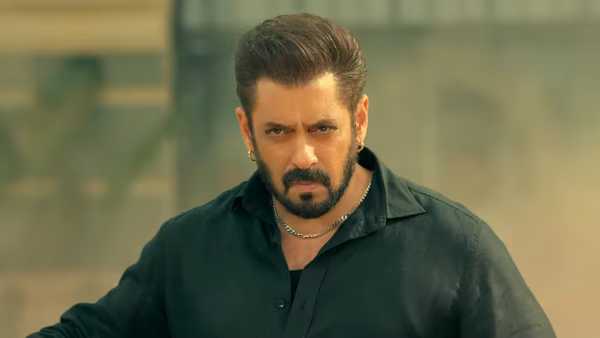Salman Khan can barely rouse himself to act anymore. Every director since Kabir Khan in Bajrangi Bhaijaan has had to work around the actor’s limitations, to coax brief flickers of star quality and hope the rest isn’t egregious. It can’t be easy for Khan’s fans to see him this way, complacent, over the hill, indulged and lied to.
The paragraph you just read applies to Sikandar but wasn’t written with it in mind. Instead, I’ve taken a line each from my reviews of his last three solo releases: Radhe, Kisi Ka Bhai Kisi Ki Jaan andTiger 3. You might say that’s lazy and unprofessional, but if Salman won’t make any effort, why should I? There’s only so many ways to say: it’s over, move on, stop embarrassing yourself.
Sikandar begins with Sanjay Rajkot (Khan) thrashing a Mumbai politician’s son, whom he catches harassing a woman on a flight. We then learn that Sanjay and his wife, Saisri (Rashmika Mandanna), are the Rajkot royal family, philanthropic, benevolent and much loved by their people (the film is strangely nostalgic for ruler-subject relations). Sanjay—also called Sikandar, after Alexander the Great—has a trained militia on standby but never seems to need them, singlehandedly decimating goons sent on the orders of the aggrieved minister (Sathyaraj).
Khan’s laziness seems to affect everyone involved, down from director A.R. Murugadoss and writers Rajat Arora, Hussain Dalal and Abbas Dalal. Early on, one of Sikandar’s employees comes to him and admits he sold weapons that were used in a terrorist attack in Punjab. Nothing about this weirdly specific confession is relevant; it’s just an unnecessarily complicated way to get Sikandar fighting in a quarry so a fatal accident can take place.
A subservient presence in outrageously successful films, Mandanna has value as a good luck charm if nothing else. Even before we get a glimpse of her in Sikandar, we hear her ghostly voiceover. This is Murugadoss’ idea of foreshadowing, along with other subtle hints like a secret she wants to tell her husband that keeps getting delayed, or Sikandar pointedly saying, I’ll never let anything happen to you. Murugadoss’ best-known film, Ghajini, is built around a dead fiancée. There’s no way Mandanna was getting out of this one alive.
As silly as the Rajkot stretch is, the film becomes even worse once our man is in Mumbai, tracking down the recipients of his wife’s donated organs, as normal people do. Khan has cultivated a cloying do-gooder image since Bajrangi Bhaijaan, which results in strange scenes involving coughing slum children and gym bros and papadam entrepreneurship. Every now and then, Khan will find himself in a fight, and then you can really see his unwillingness to put in any kind of effort. Tiger 3 showed how, even when enabled by the top talent at YRF, Indian action cinema has left Khan behind. There’s no such tension in Sikandar—everything from the conception to the choreography to the execution is mediocre.
Murugadoss made a handful of Hindi films after Ghajini, though none replicated its success. He was one of the forerunners of the Tamil/Telugu invasion of Bollywood, a movement that continues to strengthen with every new unsure Hindi release. Sikandar has all the drawbacks of this style—clumsy, unnatural writing, actors who don’t speak Hindi awkwardly mouthing lines—and none of the advantages.
The Salman project is past the point of usefulness. It’s been nine years since his last good film (Sultan), six since the last flawed-but-watchable one (Bharat). The saddest thing in the screening I was at was a group of young men who’d evidently come to cheer their hero on. But apart from a few scattered whoops, they were quiet, defeated by a film so tacky and lacklustre that encouraging it feels like a crime against cinema.
It’s both depressing and hilarious when Khan tearfully sings ajeeb dastaan hai yeh, kahaan shuru kahaan khatam. It began in 1988; it must end now. I can’t take another edition of Dastaan-e-Salman.











Leave a Reply